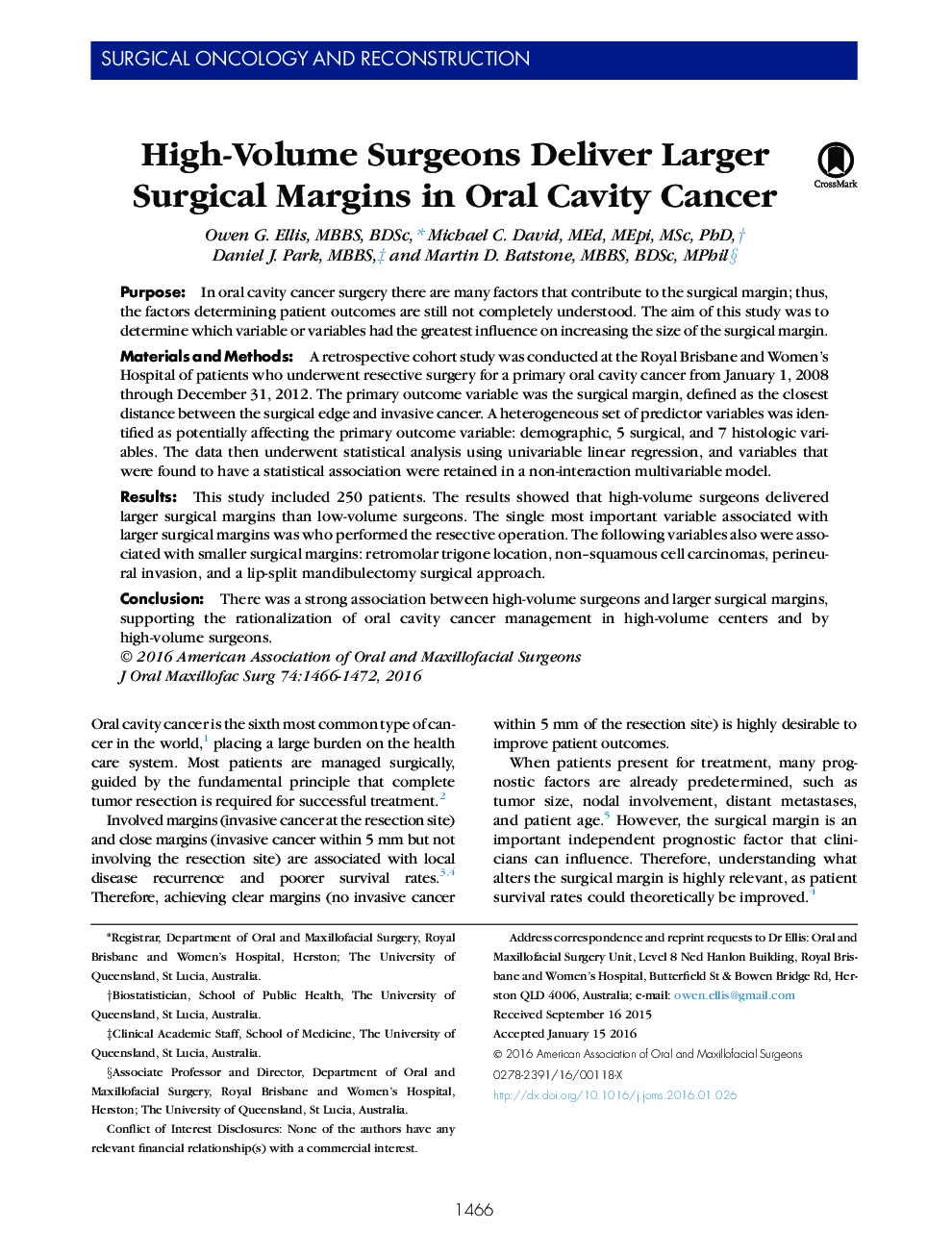| Article ID | Journal | Published Year | Pages | File Type |
|---|---|---|---|---|
| 3152093 | Journal of Oral and Maxillofacial Surgery | 2016 | 7 Pages |
PurposeIn oral cavity cancer surgery there are many factors that contribute to the surgical margin; thus, the factors determining patient outcomes are still not completely understood. The aim of this study was to determine which variable or variables had the greatest influence on increasing the size of the surgical margin.Materials and MethodsA retrospective cohort study was conducted at the Royal Brisbane and Women's Hospital of patients who underwent resective surgery for a primary oral cavity cancer from January 1, 2008 through December 31, 2012. The primary outcome variable was the surgical margin, defined as the closest distance between the surgical edge and invasive cancer. A heterogeneous set of predictor variables was identified as potentially affecting the primary outcome variable: demographic, 5 surgical, and 7 histologic variables. The data then underwent statistical analysis using univariable linear regression, and variables that were found to have a statistical association were retained in a non-interaction multivariable model.ResultsThis study included 250 patients. The results showed that high-volume surgeons delivered larger surgical margins than low-volume surgeons. The single most important variable associated with larger surgical margins was who performed the resective operation. The following variables also were associated with smaller surgical margins: retromolar trigone location, non–squamous cell carcinomas, perineural invasion, and a lip-split mandibulectomy surgical approach.ConclusionThere was a strong association between high-volume surgeons and larger surgical margins, supporting the rationalization of oral cavity cancer management in high-volume centers and by high-volume surgeons.
